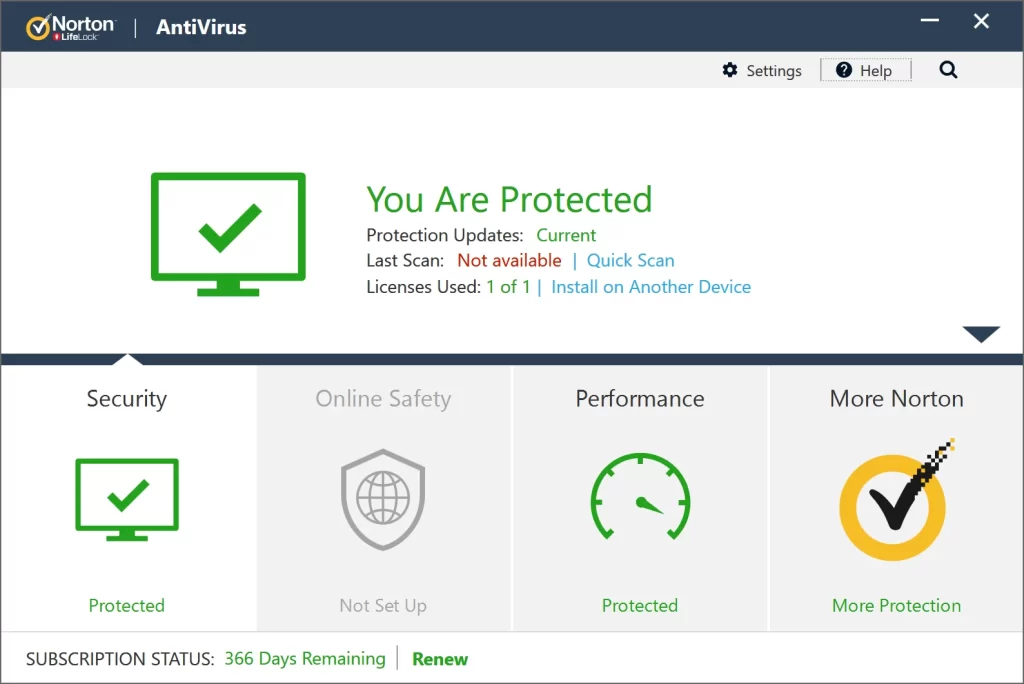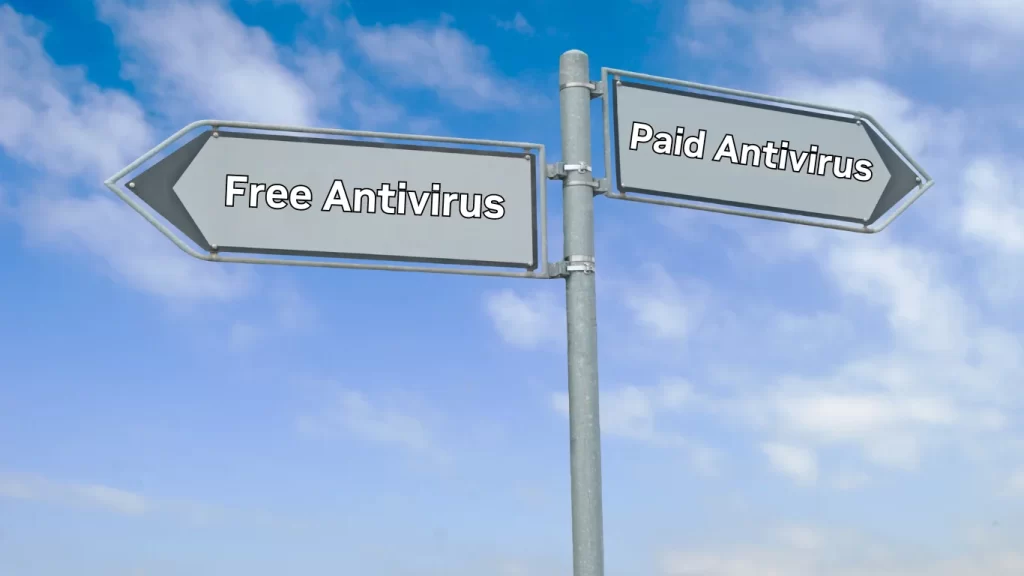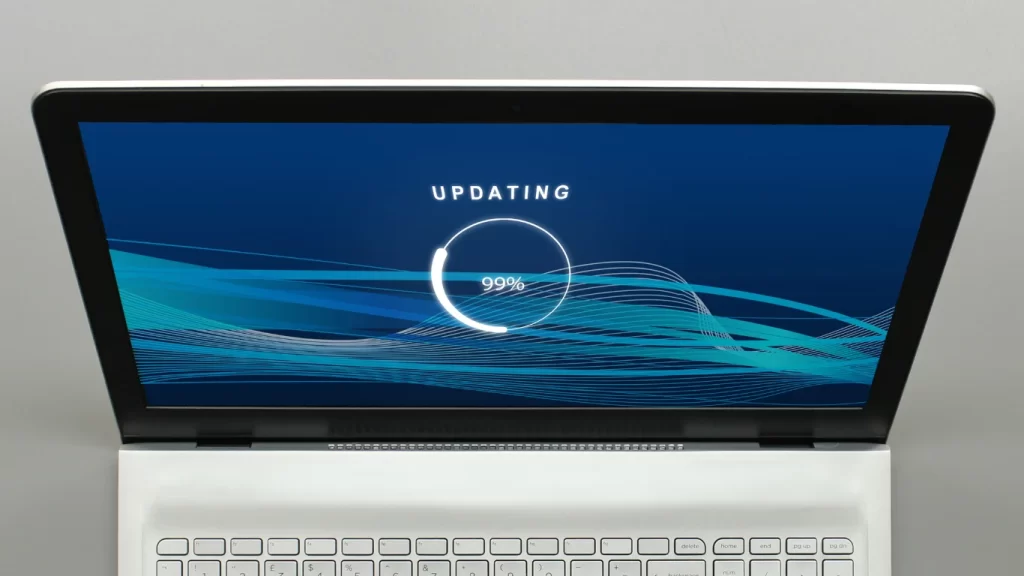Selecting the right antivirus software is a pivotal decision for safeguarding computers against many cyber threats. When embarking on this antivirus software buyers guide, it’s essential to weigh factors like performance, pricing, and user-friendliness. Highly recommended options like Norton Antivirus, Bitdefender, and Webroot stand out for their robust protection capabilities. Furthermore, considering the product’s data privacy practices is crucial in ensuring comprehensive security.
This antivirus buyer guide 2024 aims to elucidate the key attributes to seek in antivirus solutions, comparing free versus paid offerings, and guide through selecting the apt antivirus for various devices. Emphasizing installation and maintenance best practices further enriches the potential for optimal protection. With a landscape of antivirus solutions evolving rapidly, this guide is invaluable for those looking to research antivirus software and make an informed choice that aligns with their specific security needs.
Understanding Antivirus Software
Antivirus software is an essential tool in the digital age, designed to detect, thwart, and eliminate malware from computers and networks. At its core, antivirus software operates by:
- Scanning files and memory: It scrutinizes files or your computer’s memory for patterns indicative of malware.
- Utilizing malware signatures: The software matches these patterns against a database of known malware signatures to identify threats.
- Automatic removal: In many cases, it attempts to remove detected malware automatically, enhancing user convenience and safety.
However, the effectiveness of antivirus software hinges on its ability to stay updated. It primarily relies on signatures to identify malware, meaning it can only detect threats that have been previously identified and catalogued. This creates a vulnerability window against new malware variants that emerge before their signatures are added to the database. To mitigate this, antivirus solutions employ a variety of detection techniques, including:
- Signature-based detection: Identifies malware based on known signatures.
- Heuristic-based detection: Looks for unusual behaviour or patterns that might indicate new, unknown malware.
- Behaviour-based detection and Cloud analysis: Analyzes the behaviour of programs to detect suspicious actions, often leveraging cloud computing for broader data analysis.
- Sandbox analysis and HIPS (Host Intrusion Prevention System): Executes suspicious programs in a safe, isolated environment to observe their behaviour without risking the main system.
Despite these advanced techniques, challenges remain, such as the potential for false positives, system resource consumption, and the need for a multilayered security approach to address the countless threats.

Key Features to Search For In Antivirus Software
In navigating the vast landscape of antivirus solutions, discerning the essential features pivotal for robust protection becomes paramount. This antivirus software buyers guide illuminates the key attributes to prioritize:
- Regular Updates and Compatibility: Ensure the software is frequently updated and compatible with your operating system to fend off the latest threats.
- Comprehensive Protection Features:Virus and malware protection to detect and eliminate threats.
- Real-time protection and automatic scans for continuous security.
- Dark web scanning and protection from external devices safeguard personal information.
- Web protection and firewalls to monitor and filter data exchange.
- VPN services for secure and anonymous web browsing.
- Parental controls to restrict access to harmful content.
- Ease of Use and Performance:A user-friendly interface with minimal impact on device performance.
- Features like automatic updates and auto-clean ensure simplicity and efficiency.
- Additional tools such as password managers and system optimization enhance user experience and security.
Selecting antivirus software equipped with these features, backed by reliable customer support, ensures a fortified defense against the plethora of cyber threats.
Comparing Free vs Paid Antivirus Solutions

When considering antivirus solutions, the choice between free and paid versions is pivotal. Below is a comparison to guide users through their options:
Free Antivirus Solutions:
- Basic Protection: Adequate for most internet users, providing essential defence against common viruses and malware.
- Functionality: Includes real-time data about new threats, blocks dangerous files and warns about suspicious websites. However, it may leave users vulnerable to yet-unknown threats and offer less protection around sensitive online activities.
- Support and Features: Often comes without direct technical support. Customizable options for different devices and operating systems are limited compared to paid versions.
Paid Antivirus Solutions:
- Comprehensive Protection: Offers advanced protection against both known and unknown threats, including malware protection, firewall, antispam filter, and more.
- Enhanced Features: Includes anti-phishing toolbars, file shredders, and comprehensive computer safekeeping features like IM Protection, Firewall, and Privacy Filter. Also, provides greater control over private data and sensitive online activities.
- Support and Coverage: Direct technical support available. Allows users to secure all devices (PC, Mac, mobile) and includes extended functions such as anti-spam, personal firewall, and parental control features.
Comparison Table:
| Feature | Free Antivirus | Paid Antivirus |
|---|---|---|
| Protection Level | Basic | Comprehensive |
| Advanced Features | Limited | Extensive (e.g., Firewall, Antispam) |
| Support | Limited/None | Direct Technical Support |
| Device Coverage | Basic | Multi-device Coverage |
| Online Activity Protection | Less | Increased |
Choosing between free and paid antivirus solutions depends on the user’s specific needs, the level of protection desired, and the value placed on advanced features and support.
Selecting the Right Antivirus for Different Devices
Selecting the right antivirus software necessitates understanding the unique security needs of different devices, from personal computers to smartphones. The antivirus market caters to a wide range of operating systems, including Windows, macOS, and Android, each with tailored solutions to offer comprehensive protection.
- Multi-Device Protection:Norton 360: Ideal for households or individuals with multiple devices, offering protection for up to 10 devices. It includes a password manager, VPN, dark web monitoring, and cloud backups, ensuring a well-rounded security suite.
- Bitdefender Family Pack: With coverage for up to 15 devices, this package is perfect for families, providing ransomware and web-attack protection, anti-phishing tools, VPN, and microphone and webcam blocking features.
- Budget-Friendly Options:Surfshark One Antivirus: A cost-effective choice for up to 5 devices, offering real-time protection and zero-day exploit prevention to keep your systems secure without breaking the bank.
- Specialized Solutions: TotalAV: Supports PC and Mac, focusing on real-time virus scanning, phishing protection, and system optimization.
- McAfee Total Protection: Unlimited device coverage, integrated with identity-theft monitoring, social media privacy optimization, and scam protection, making it an excellent choice for tech-savvy users.
For laptops, reputable antivirus software like Norton, McAfee, Kaspersky, Avast, Bitdefender, and Trend Micro provide real-time protection, catering to the portable nature of these devices and the unique threats they face.
Installation and Maintenance Best Practices
Upon successfully choosing antivirus software, the subsequent critical steps involve its installation and ongoing maintenance to ensure it operates effectively. Adhering to best practices during these phases can significantly enhance your device’s protection against cyber threats.
Installation Best Practices:
- Initial Setup: Begin by running the first antivirus scan to detect and manage any pre-existing malware on your device.
- Enable Real-Time Protection: This ensures continuous surveillance and protection against threats.
- Automatic Updates: Configure your antivirus to automatically update itself to protect against new malware.
- Safety Precautions: Avoid downloading or installing unfamiliar software and do not open unexpected email attachments or click on links from unknown sources.

Maintenance Best Practices:
- Regular Updates: Manually check for software updates at least once a week and enable automatic updates to combat emerging threats.
- Scheduled Scans: Utilize both “on-access” and “scheduled” scanning features for comprehensive protection.
- Backup and Test: Always backup your data before and after updates. Regularly test backups to ensure data integrity.
- Troubleshooting: Address update errors by ensuring a stable internet connection and sufficient storage space. For compatibility or performance issues, adjust antivirus settings and ensure your system meets the software’s requirements.
By following these guidelines, users can maximize their antivirus software’s efficacy, ensuring robust defense against evolving cyber threats.

FAQs
What should I look for when selecting the ideal antivirus software?
When choosing antivirus software, focus on three core aspects: its performance and reliability, the cost and value for money, and how user-friendly and easy it is to use.
What are the key factors to evaluate before buying antivirus software?
Before purchasing antivirus software, consider the following: your budget, the availability of free trial periods, the compatibility of the software with your device, the protection it offers during downloads, its impact on your device’s speed, and the privacy policy of the software provider.
Based on what criteria should I choose my antivirus program?
Select an antivirus program based on the quality of its protection, which includes the effectiveness of its malware detection, the frequency and consistency of its updates, its ability to eradicate infections, and its efficiency in safeguarding your computer without significantly slowing it down.
Why are best practices for antivirus policies important, and what are they?
Best practices for antivirus policies are crucial because they ensure continuous and effective protection against malicious software. Antivirus software should be installed and actively running on all servers and workstations that are susceptible to malware. It should also be capable of detecting, removing, and safeguarding against all known malware types.
Summing Up: Antivirus Software Buyers Guide
Throughout this guide, we have delved into the critical aspects of selecting suitable antivirus software, emphasizing the importance of factors such as performance, compatibility, and comprehensive protection features. From comparing free versus paid solutions to understanding the unique security needs of different devices, we aimed to arm readers with the knowledge necessary to make an informed decision that aligns with their security requirements and budgetary constraints. The guide also highlighted the significance of regular updates and the implementation of best practices for installation and maintenance to bolster the software’s effectiveness against the constantly evolving cyber threats.
The decision to invest in antivirus software is not just about safeguarding devices but also about protecting personal information and privacy in an increasingly interconnected digital world. Whether opting for robust, paid solutions or navigating the nuances of free versions, the ultimate goal remains the same: to achieve a level of protection that mitigates risk and fosters a secure computing environment. As cyber threats are becoming increasingly more sophisticated and advanced, users must stay informed and ready to adapt their cybersecurity measures, ensuring continued vigilance and resilience against potential digital intrusions.





